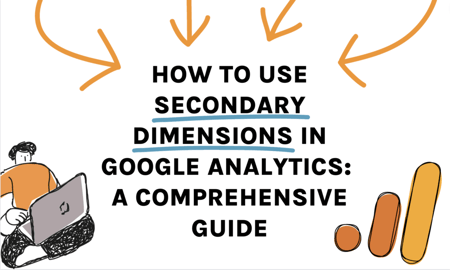Transform Your Information Comprehending With Second Dimensions
Exploring information with the lens of additional measurements opens a world of untapped understandings, using an extra nuanced viewpoint on the ins and outs of your dataset. By unraveling the layers under the surface area metrics, you can reveal patterns and connections that might have or else gone unnoticed, leading the way for notified decision-making and strategic optimizations. This strategic usage of additional dimensions not just enhances your data comprehension but additionally acts as a catalyst for opening the full possibility of your analytics endeavors.
Benefits of Additional Measurements

By layering additional measurements onto existing data, organizations can evaluate the impact of numerous variables on crucial metrics, aiding them make more informed decisions. Overall, the usage of second measurements leads to a lot more informative and robust data evaluation, empowering businesses to drive tactical activities based on a much deeper understanding of their information.

Just How to Apply Second Measurements
To successfully implement additional dimensions in information evaluation, organizations should initially recognize essential variables that line up with their logical objectives and goals. This entails identifying the details metrics and measurements that are most pertinent to the understandings they look for to acquire from the information. Once these crucial variables are recognized, services can then select the ideal additional dimensions to enhance their analysis additionally. It is important to think about just how these secondary dimensions will offer additional context and deepness to the primary data being analyzed.

Studying Information With Additional Dimensions
Utilizing secondary measurements in data analysis enhances the depth and context of insights originated from primary data. By integrating second dimensions right into your analysis, you can gain a more comprehensive understanding of the partnerships and patterns within your information. This procedure entails checking out the key information through various lenses or viewpoints, which can disclose hidden connections or fads that may not be instantly apparent when evaluating the information making use of only key dimensions.
Assessing information with secondary measurements permits you to section and team your data in various methods, providing a much more nuanced sight of your dataset. secondary dimensions. This division can assist you identify particular factors that may be affecting the end results you are studying. By piercing down into the data using additional measurements, you can uncover beneficial insights that can direct decision-making and method advancement
Finest Practices for Second Measurements
When including secondary measurements right into information analysis, precision in defining the dimensions is critical for drawing out meaningful insights. It is important to select additional measurements that complement the key data properly.
An additional best method is to avoid redundancy in measurements. Make sure that the secondary dimensions include brand-new point of views or details to the evaluation, instead of replicating information currently present in the main measurements. This will certainly aid prevent complication and simplify the interpretation of the data.
Additionally, it is important to think about the scalability of the analysis when picking secondary dimensions. Choose dimensions that can be easily expanded or readjusted as needed to suit future data requirements or adjustments in analytical focus. By complying with these finest techniques, experts can make best use of the value of additional measurements in information evaluation and gain deeper insights into their datasets.
Making Best Use Of Insights Through Additional Dimensions
Incorporating second measurements tactically boosts data evaluation by supplying a deeper understanding of the partnerships within the dataset (secondary that site dimensions). By maximizing understandings with second dimensions, experts can uncover valuable patterns, patterns, and dependences that may not be quickly obvious when examining the information with main measurements alone
One secret advantage of have a peek here utilizing additional dimensions is the capacity to section and filter information a lot more specifically. This segmentation permits an extra granular analysis of specific parts within the dataset, enabling analysts to recognize correlations and causations that could have or else been neglected.
In addition, secondary measurements can assist in contextualizing main information points by adding layers of info that offer an even more thorough view of the data. This contextualization is important for making educated choices based upon content an all natural understanding of the dataset.
Verdict
To conclude, including additional dimensions in information analysis processes offers a much more comprehensive and nuanced understanding of information, bring about improved understandings and calculated decision-making. By incorporating extra variables that align with logical goals, hidden trends and correlations can be revealed, offering an extra thorough and contextualized view of information. This method optimizes the capacity for optimization and reveals brand-new opportunities within operations.
On the whole, the utilization of secondary measurements leads to extra robust and insightful data evaluation, equipping organizations to drive calculated actions based on a deeper understanding of their data.
Utilizing additional dimensions in information evaluation boosts the deepness and context of understandings derived from primary data.Evaluating information with secondary measurements allows you to sector and team your information in various means, offering a much more nuanced sight of your dataset.When including second dimensions into information evaluation, precision in specifying the dimensions is critical for drawing out purposeful understandings. Guarantee that the secondary measurements include brand-new viewpoints or information to the evaluation, instead than replicating information currently present in the primary measurements.
Comments on “Opening SEO Success with Advanced Analytics and Secondary Dimensions”